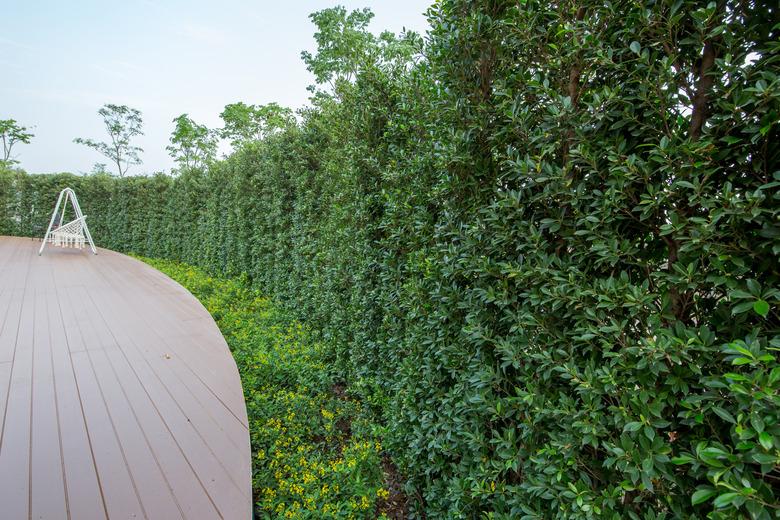How Tall And Fast Will A Ficus Hedge Grow?
We may receive a commission on purchases made from links.
Ficus trees are popular for hedges in warm climates. They have many selling points as hedges, including very rapid growth and lush foliage that works well to build in privacy or hide an eyesore.
What is the primary disadvantage? The same fast growth that makes them desirable to those who wish they'd planted a hedge five years ago may prove an annoying nuisance in the long run. If not frequently pruned, ficus hedges will quickly become, according to their natural habit, massive trees with large, spreading, muscular branches.
Ficus Trees for Hedging
Ficus Trees for Hedging
Gardeners in frost-free regions often opt to plant ornamental fig trees as hedges and screens. These plants are inexpensive compared to other hedging plants. They are known to grow quickly and to tolerate tremendous abuse from pruning.
Weeping fig (Ficus benjamina) and its cultivars are among the most widely used for hedges of all the dozens of fig tree species. They are hardy in the warmest zones, like U.S. Department of Agriculture plant hardiness zones 10B through 11. The weeping fig varieties offer a glossy wall of innumerable leaves that make them effective as hedges. The foliage easily blocks unsightly views or creates privacy around the edge of a property.
Size of a Weeping Fig
Size of a Weeping Fig
The weeping fig can accurately be termed a huge tree. The cute little potted specimen you might buy to plant outside will soon grow to 60 feet tall and 60 to 100 feet wide. It's a lovely landscape tree, with a lush, rounded canopy and "weeping" branches that droop gracefully.
The weeping fig leaves are evergreen, glossy, and thick. They grow to between 2 and 4 inches long. As branches "weep" toward the ground, the tree forms a dense canopy that prevents anything from growing under it.
Ficus Growth Rate
Ficus Growth Rate
The weeping fig not only grows tall, but it also grows tall fast. It can only be described as a very fast-growing plant. When gardeners plant a weeping fig hedge, they are really just cutting the ficus trees down to a desired size. But the trees do not suddenly stop being trees just because they are planted in a hedge. They continue to grow and must be pruned frequently to prevent an oversized hedge that no longer fits the gardener's needs.
If the soil is fertile, evenly moist, and well-drained, expect the tree to grow at least 24 inches a year and somewhat more when planted in a sunny location. Note that the fastest growth of weeping fig hedges occurs in deep soils that anchor the large, spreading surface roots. Anyone looking for faster growth should plant the hedge in loam soil, add organic matter, and provide a nitrogen-rich fertilizer in spring and summer.
